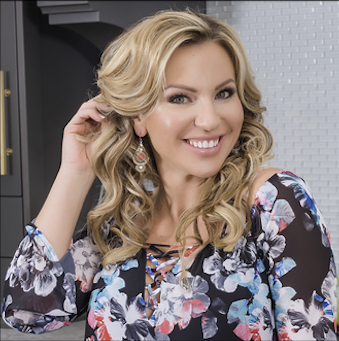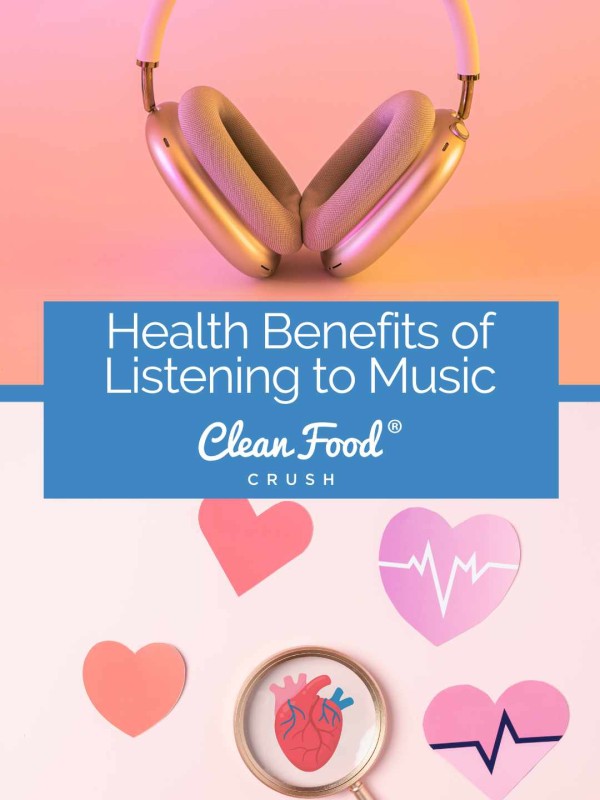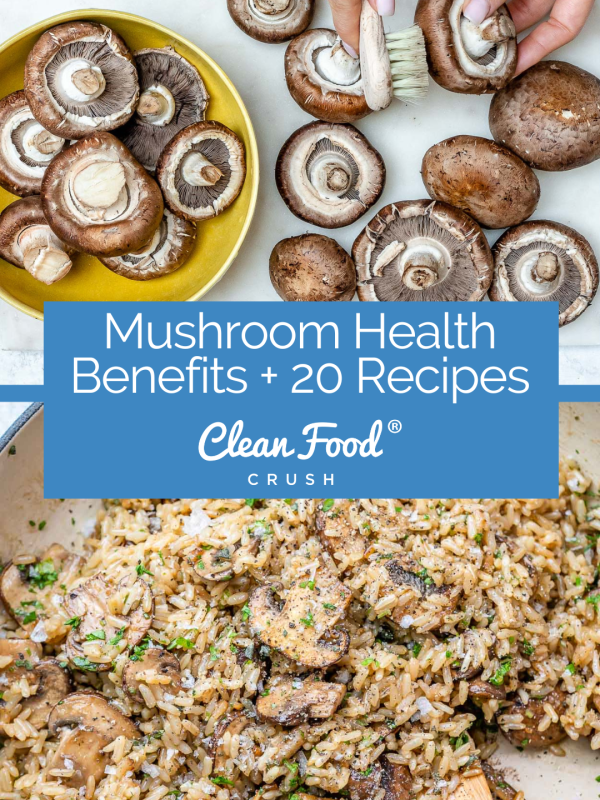This post contains affiliate links. Please see our disclosure policy.

The Do’s and Don’ts of Healthy Napping
Getting enough rest every night is absolutely essential for physical, mental, and overall health. The hope is you get all the sleep you need at night but sometimes you may just need a good nap. Whether you’re sleep-deprived, know you’re about to lose some sleep, need to relax, or need to boost your energy, you might consider laying down for a few minutes for a restart.
Unfortunately, naps can be unpredictable, and taking one at the wrong time or the wrong way can do more harm than good. There are ways to reduce the negative effects of napping while capitalizing on all the great benefits!
Keep reading to learn about the pros, cons, do’s, and don’ts of healthy napping.
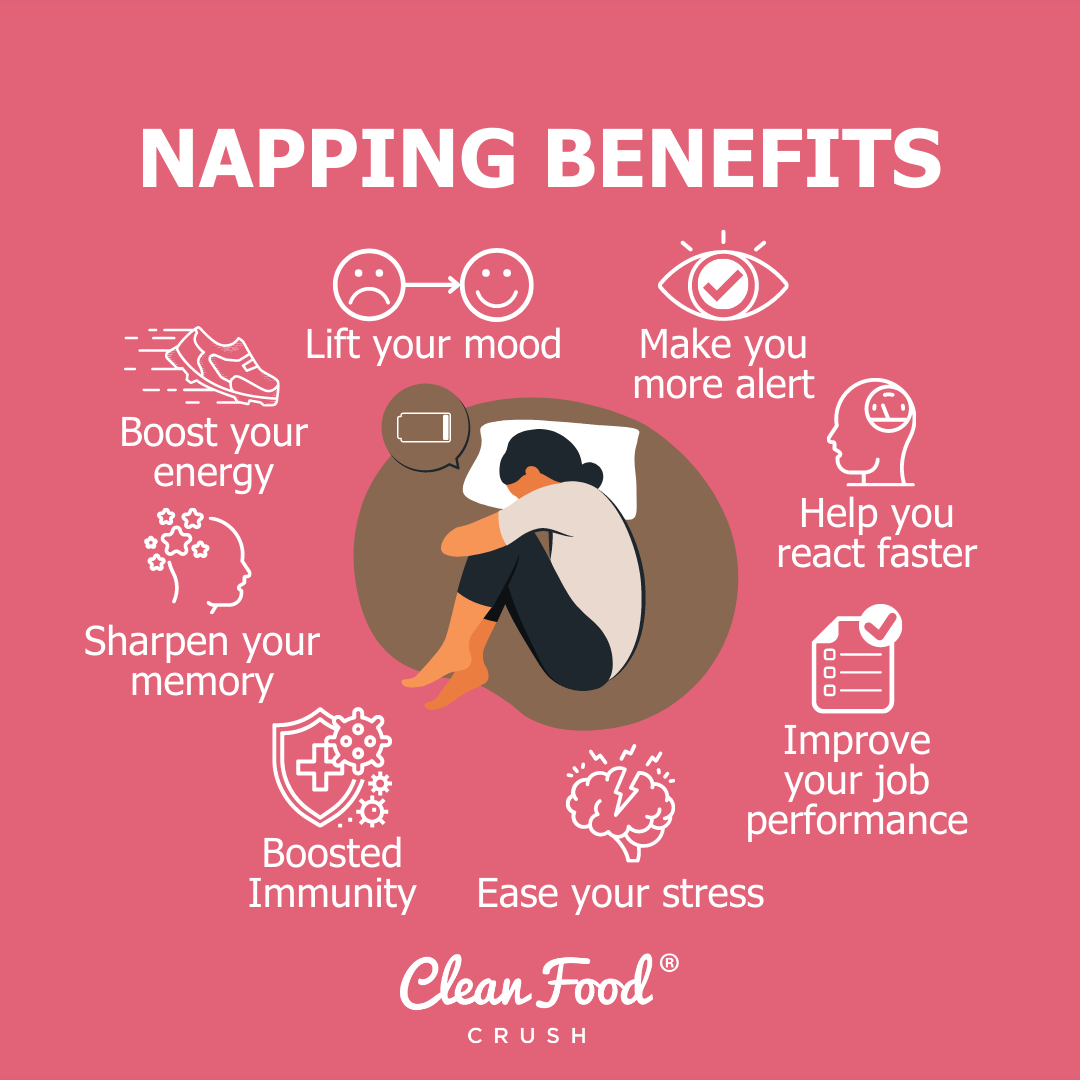
The Pros of Napping:
There are several reasons that adults may want to add regular naps into their schedules. These include, but aren’t limited to:
- Relaxation & Reduced Fatigue
This may seem obvious but studies show that our bodies and brains benefit from quick periods of sleep (a nap) when recovering from fatigue. Naps also help restore alertness and relax the mind and body.
- Better Cognition, Memory, & Alertness
Power naps (10-20 min) in particular can increase alertness and help your brain function more efficiently. This means better memory consolidation (when the brain turns experiences and information into long-term memory), better information retention, problem-solving abilities, enhanced creativity, and increased productivity.
- Improved Mood
Ever been extra cranky when you’re tired? I’m sure we’ve all said or done something we shouldn’t just because we missed some sleep the night before. Naps aid in improving your mood, lowering stress and anxiety, and reducing depression symptoms. Next time your temper feels too short, try taking a quick nap!
- Boosted Immunity
Sleep deprivation is detrimental to overall health and can heighten the risk for immunodeficiency. Regular napping aids in improving the immune system and reducing inflammation.
The Cons of Napping:
Midday rests aren’t for everyone, though. There can be several drawbacks to napping, especially if done poorly. These include:
- Sleep Inertia
One of the risks of taking a midday nap is feeling disorientated and groggy after waking up. Sleep inertia is the moment of transitioning from wake to sleep when you want to fall back to sleep and there’s reduced vigilance. A nap may come with a longer, more intense moment of sleep inertia.
- Nighttime Sleep Problems
Too many naps or too long of a nap may affect the quality of sleep at night. This doesn’t generally happen, but naps may exacerbate the issues if you’re experiencing insomnia or poor sleep quality at night.
- May Increase Health Risks
Some new studies show that some naps, particularly longer naps, may increase the risk for heart disease or other health risks. This refers to naps lasting longer than 90 minutes when you’re also sleeping more than six hours a night.
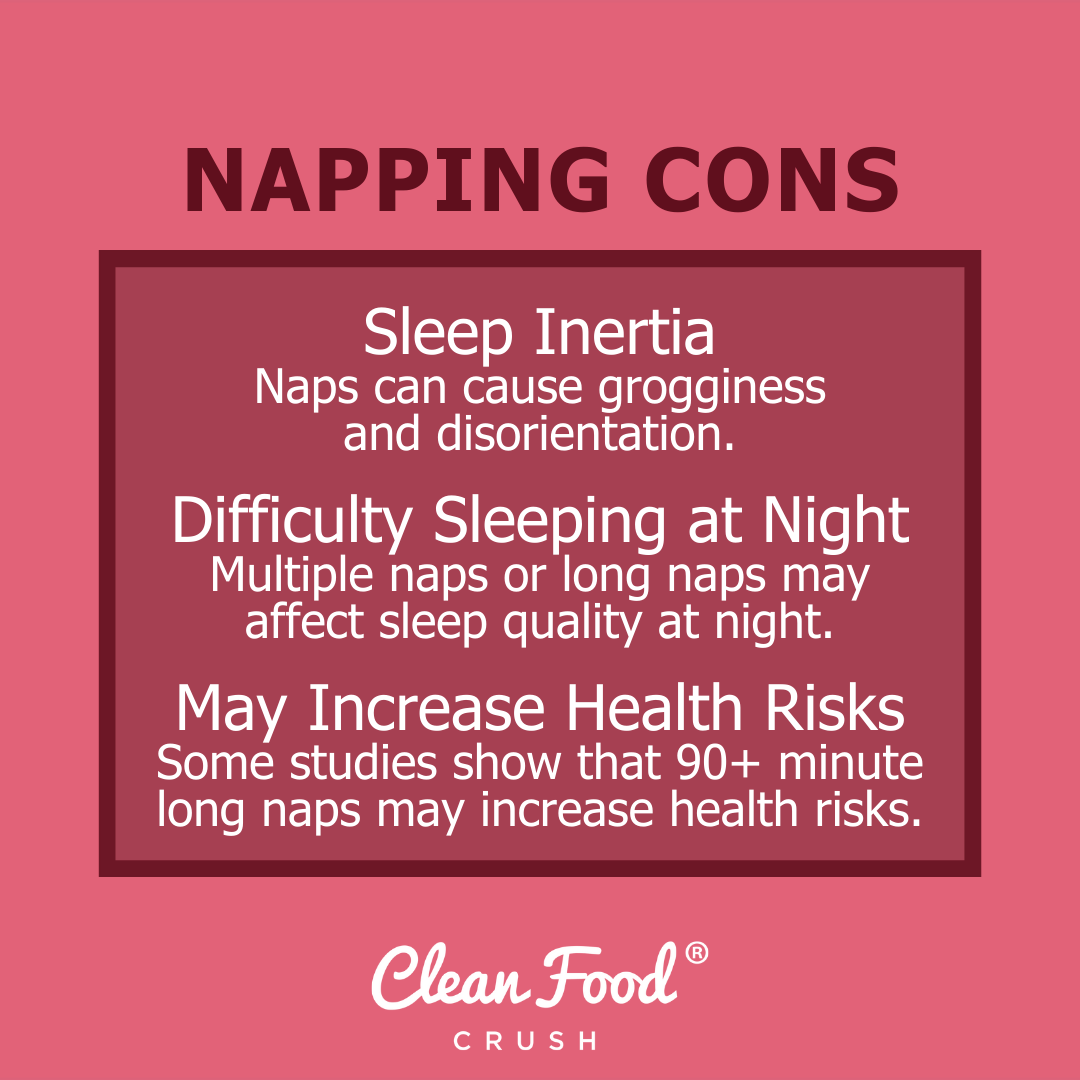
Napping Do’s:
- Take quick, short naps about 10-30 minutes long. This is the sweet spot for most people. A “power nap” is more likely to boost alertness and waking up within 30 minutes means are still in the sleep cycle’s early stages.
- Nap at the right time of day. Normally, between 1 and 3 pm will be the best, most natural time to sleep. Any earlier and your body likely won’t be ready for more sleep and any later increases the risk of ruining your night’s sleep. However, the best time to nap is determined based on your individual life. Your specific need for sleep, schedule, age, and medication use, may all impact when you should be napping.
- Set up a napping environment. Just because you’re sleeping during the day doesn’t mean any environment will work. Try napping in a dark, cool, and quiet place. You may even want to wear an eye mask or have a white noise machine playing.
- Wake yourself gradually. Give yourself time to wake up and set an alarm that gradually wakes you up, such as a song that starts quietly and builds as it goes. And once you’re awake, give yourself time before jumping back into high-stress activities.
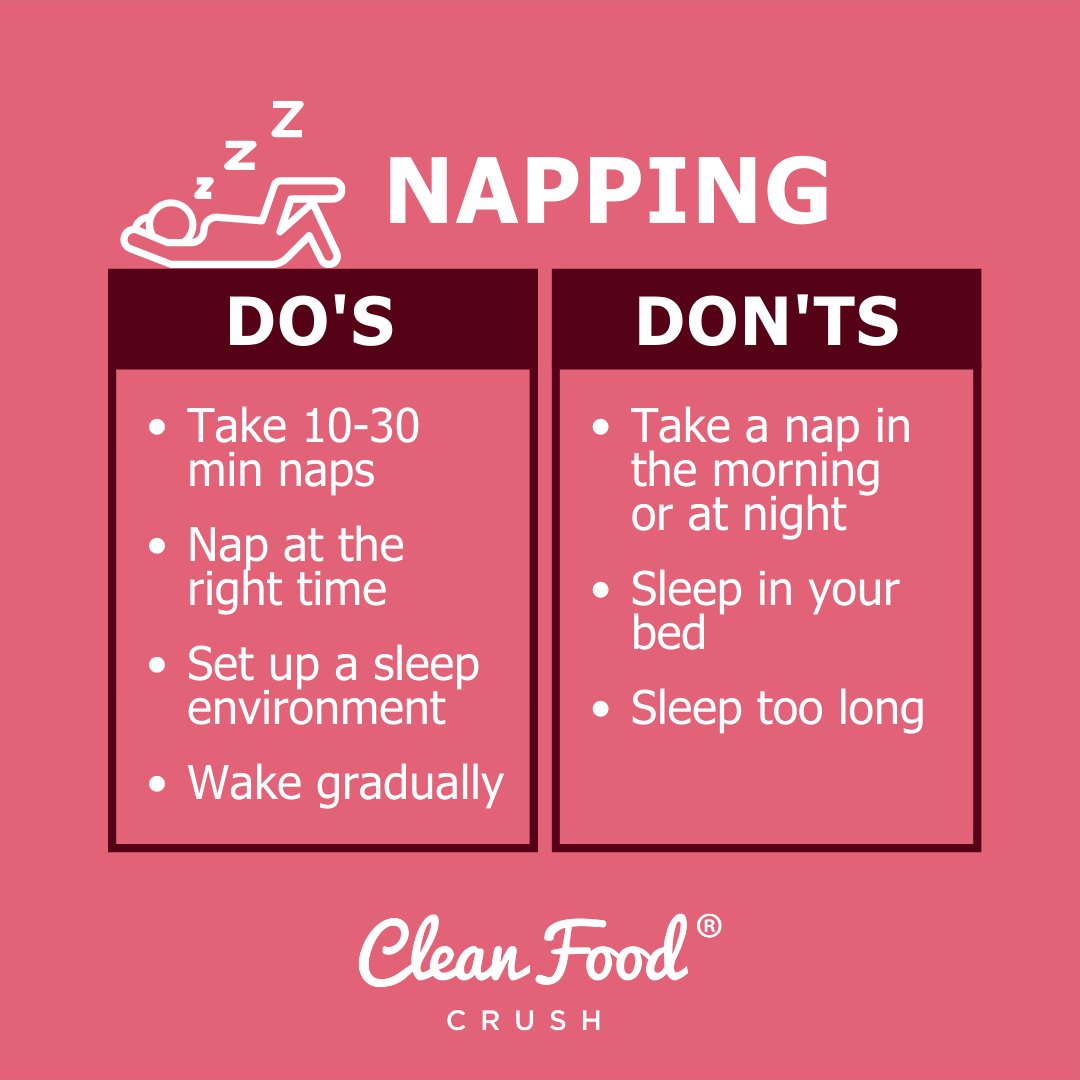
Napping Don’ts
- Don’t take a nap in the morning or at night (unless you’re working the night shift). Napping too soon after waking up or too close to bedtime can mess with your sleep schedule and REM cycle.
- Don’t sleep in your bed. Choose a cozy chair or couch for napping rather than your bed. This is because laying in your comfortable bed will communicate to your brain that you’re about to sleep for several hours (because that’s what you do at night). It can also make it more difficult to get up at the end of your nap time.
- Don’t sleep too long. Unless you’re really struggling and need extra sleep, try not to take a nap longer than 30 minutes. Longer naps will increase the likelihood that you’ll feel groggy when you wake up because you were further into the sleep cycle. If you need more sleep, try a 90-minute nap, ensuring an entire sleep cycle. That way, you’re waking up at the end of the cycle, not in the middle.
- Don’t ignore increased, excessive needs for sleep. Frequent fatigue that causes you to doze off at unplanned times or for long periods may indicate other issues such as sleep disorders, health issues, a reaction to a medication, cognitive decline, or mental health problems. If you’re noticing increased fatigue, consult a health professional.
- Don’t ignore your doctor’s advice. If your doctor has advised against napping for any reason, such as an insomnia diagnosis, then try to avoid napping. Always follow your doctor’s instructions as best you can.
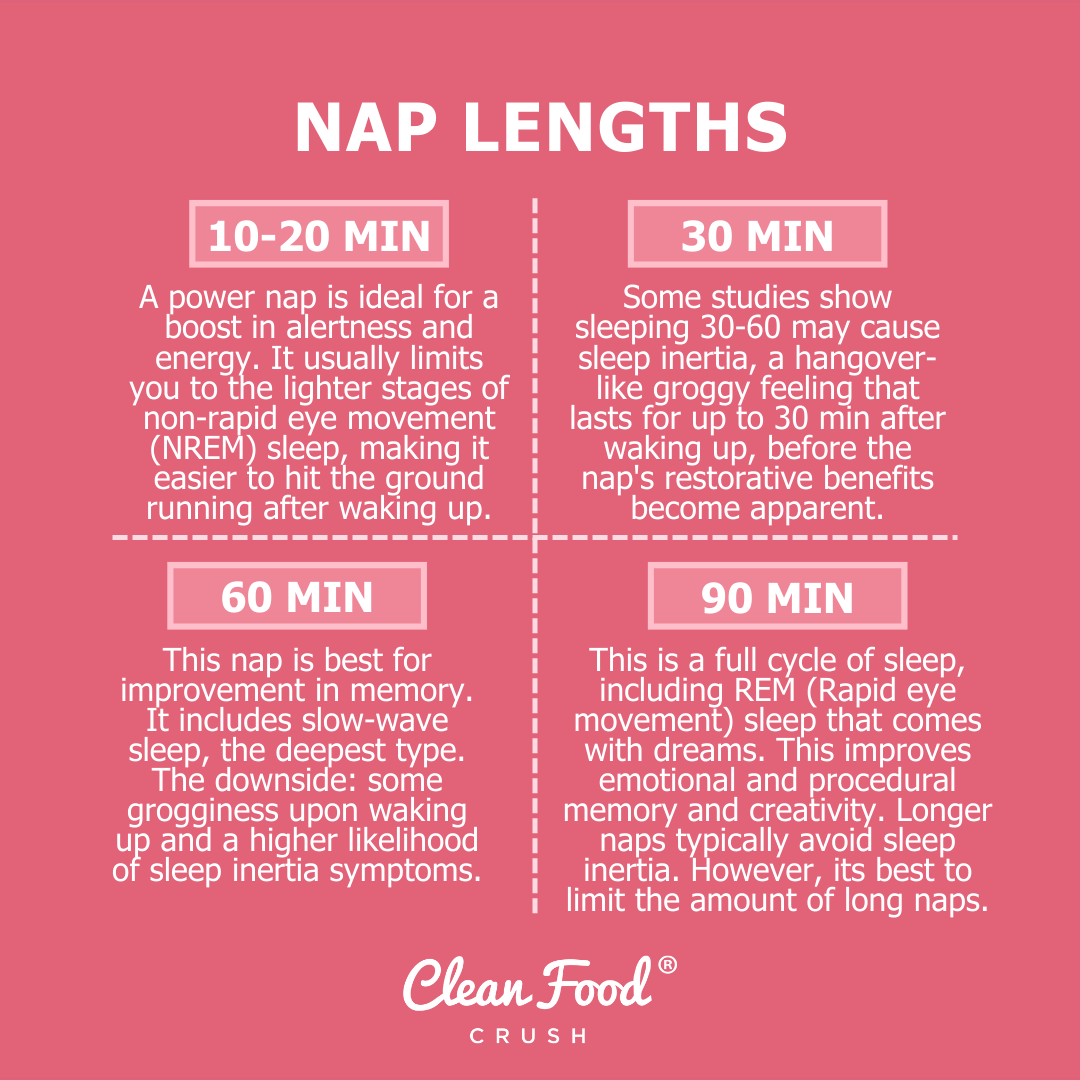
We all need sufficient, adequate sleep to live a full life. Sometimes, regular sleeping at night doesn’t do the trick and you need a pick-me-up during the day.
And that’s the beauty of napping! Happy resting, CRUSHers!


